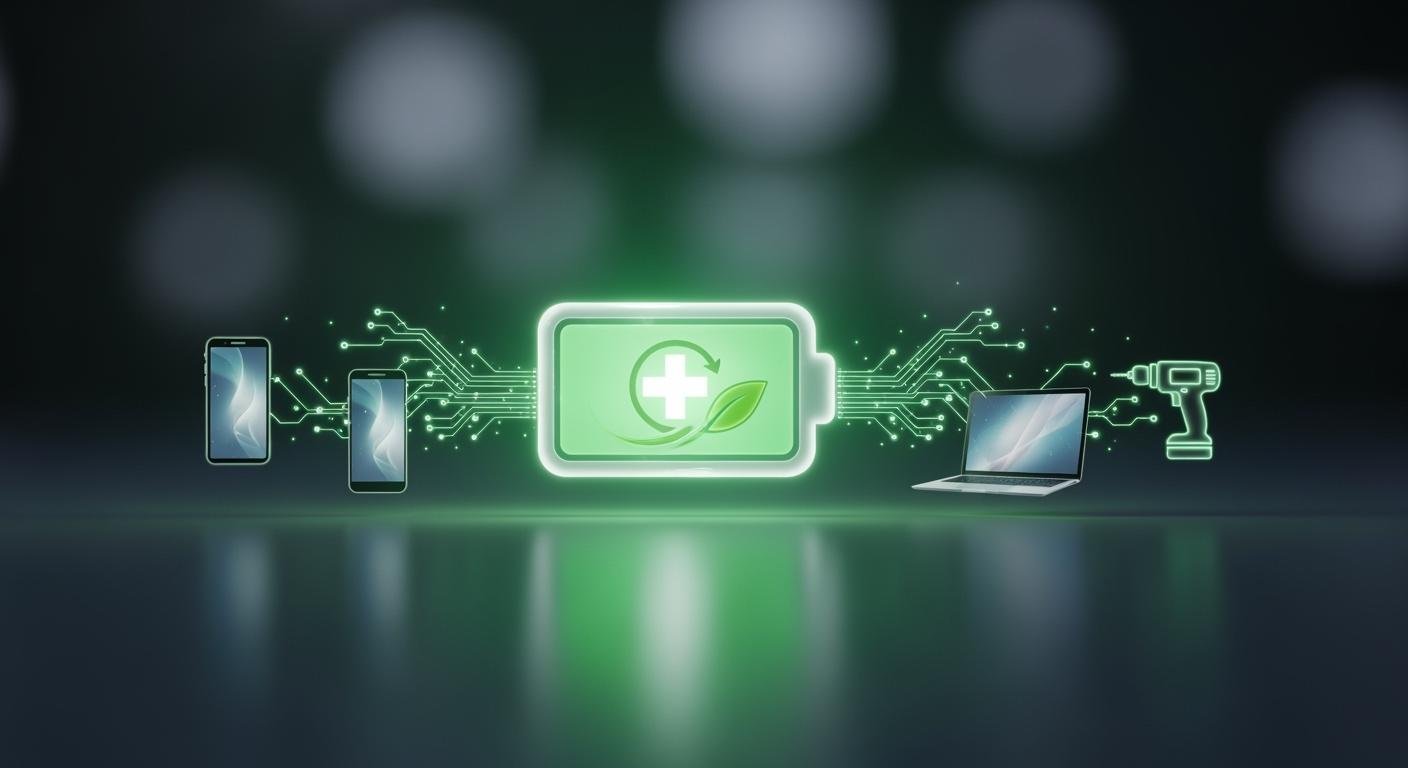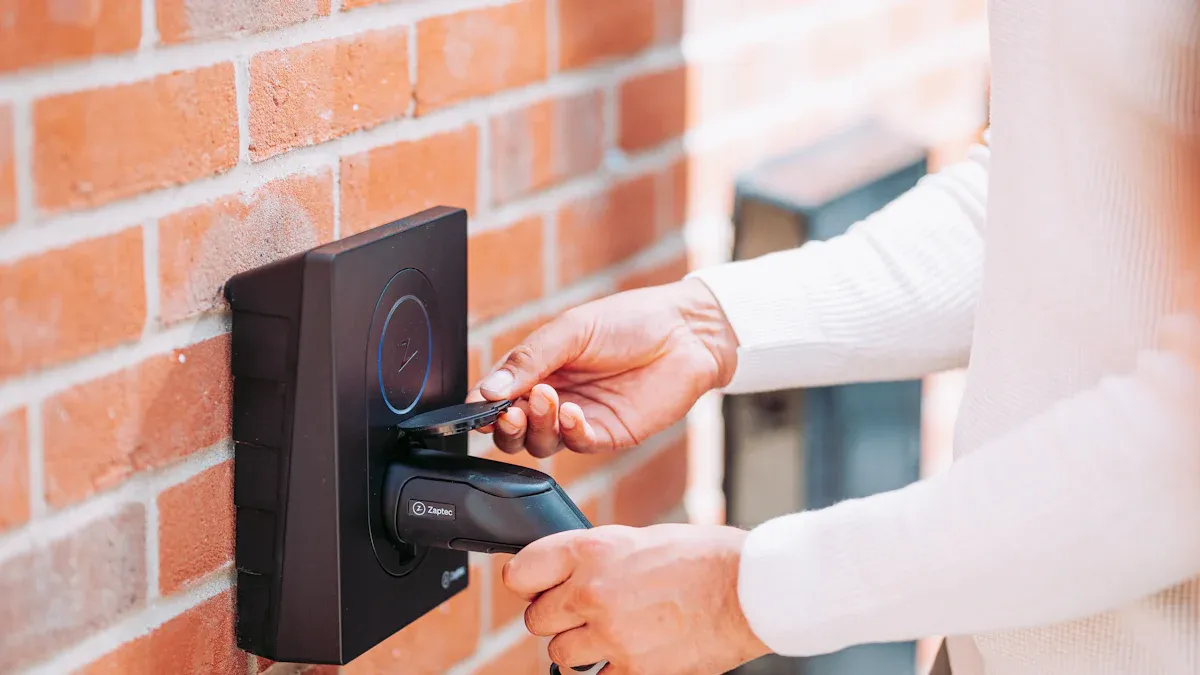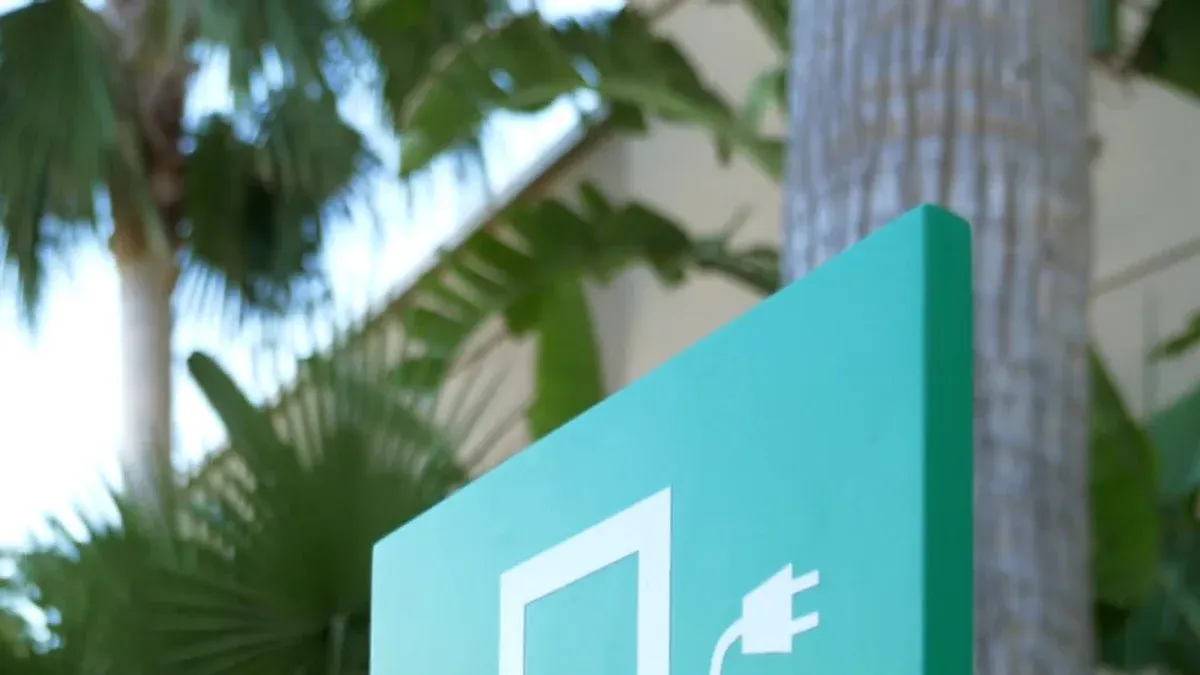
You can maximize lifespan for your rechargeable battery. Excellent battery care helps prolong battery life and protects your investment. Your rechargeable device’s battery lifespan depends on your charging habits. These simple tips improve your battery longevity and prolong battery life for your battery.
Three Habits for Better Battery Longevity 🔋
- Keep your rechargeable battery’s charging level between 20% and 80%.
- Protect the battery from extreme heat and cold.
- Use the correct charger for every charging session.
Smart Charging to Maximize Lifespan
Your charging habits directly impact the longevity of your lithium-ion battery. A typical 3.7v lithium-ion battery has an average lifespan of 300-500 charge cycles. You should understand what a charge cycle is. A single cycle happens when you use 100% of the battery’s capacity. For example, charging from 0% to 100% is one full cycle. Similarly, two separate charges from 50% to 100% also add up to one cycle. Understanding battery cycles is key to better battery care. These tips will help you adopt the best practices for charging your rechargeable devices.
The 20-80% Sweet Spot
You can prolong battery life by keeping your charge level between 20% and 80%. This simple habit avoids stress on your lithium-ion battery. Pushing a lithium-ion battery to 100% or letting it drop to 0% strains its components. This strain reduces the battery’s overall cycle life. Partial charging and discharging is much healthier for the battery. Staying within this “sweet spot” is one of the most effective ways to maximize lifespan and improve battery longevity.
Scientific Backing for the 80% Rule 🔬 A scientific study on lithium-ion cells provides strong support for this practice.
- Researchers found that the “knee point,” where a battery’s capacity begins to drop quickly, occurs when it loses about 15-20% of its original capacity.
- This means that consistently charging to 100% accelerates the arrival of this knee point, shortening the battery’s useful lifespan.
- Keeping the charge below 80% helps delay this rapid decline and extends the cycle life of your lithium-ion battery.
Dangers of Overnight Charging
Leaving your devices plugged in overnight is a common but risky practice. Modern devices have safeguards, but continuous charging still generates excess heat. This heat degrades the lithium-ion battery over time. More importantly, overnight charging increases fire risk. Statistics show that lithium-based batteries are linked to about 6,000 fires each year in the United States. A significant number of these incidents happen during the charging process. In one case, a security camera filmed a lithium-ion battery fire that started overnight at a business, causing an estimated $3 million in damages. For safety and to extend your battery’s lifespan, you should unplug your device once it is sufficiently charged.
Verwenden Sie das richtige Ladegerät
The quality of your charger is just as important as your charging habits. Using the right charger ensures your battery receives a stable and correct amount of power. An incorrect or uncertified charger can cause serious damage. It may fail to stop charging when the battery is full, leading to overcharging that harms the battery’s cycle life. Low-quality chargers often lack safety features, which can cause overheating, inconsistent power delivery, and a shorter lifespan for your 3.7v lithium-ion battery. To protect your rechargeable battery, you should always use the official charger or one certified by the device manufacturer.
Checklist for a Quality Charger ✅ When you select a charger for your lithium-ion battery, check for these key indicators of quality and safety:
- Certification Marks: Look for symbols like UL, CE, ETL, or FCC. These marks show the charger meets safety standards.
- Output Specifications: The charger’s voltage (V) and current (A) must match your device’s requirements. Using the wrong output can damage the battery.
- Fast Charging Protocols: For fast charging, your device, cable, and charger must all support the same protocol.
Following these best practices for charging will help you maximize lifespan and get the most out of your 3.7v lithium-ion battery. Good charging habits are essential to prolong battery life and ensure the longevity of your lithium-based electronics.
Temperature Control for Your Battery

Temperature is a critical factor that affects your battery’s health and longevity. Your lithium-ion battery works best within a specific temperature range. Exposing it to extreme heat or cold can cause permanent damage and shorten its lifespan. You can protect your battery by managing its temperature. These tips will help you maintain ideal conditions for your lithium-ion battery.
Ideal Operating Temperatures
You should operate your devices in moderate temperatures to protect the lithium-ion battery. Lithium-ion batteries perform best between 15°C and 25°C (59°F to 77°F). This range ensures the battery can store and release energy efficiently. While a slightly wider range up to 35°C (95°F) is acceptable, staying within the cooler, optimal zone is best for the battery. Keeping your lithium-ion battery in this comfort zone is a simple way to extend its lifespan.
Long-Term Storage Practices
Proper storage is essential if you do not plan to use a device for an extended period. The right storage conditions can prevent significant capacity loss. You should prepare your lithium-ion battery correctly before putting it away.
Tips for Long-Term Battery Storage 📦
- Charge Level: Store the lithium-ion battery at a 40-60% state of charge. A 50% charge is perfect. Storing a fully charged lithium battery causes stress and faster degradation, while a fully depleted one risks falling into a deep discharge state.
- Standort: Keep the battery in a cool, dry place. The ideal storage temperature is around 15-20°C (59-68°F).
- Humidity: Ensure the storage area has a humidity level below 50%. High humidity can cause condensation and damage the battery’s electronic components.
Following these storage conditions helps your lithium battery lose less than 5% of its capacity annually. In contrast, a fully charged lithium-ion battery stored in a warm place can lose up to 20% of its capacity in a single year.
Avoid Heat and Freezing Cold
Extreme temperatures are the enemy of a healthy lithium-ion battery. Both high heat and freezing cold can cause irreversible damage. You must protect your battery from these conditions to ensure its longevity.
High temperatures, especially above 35°C (95°F), accelerate the chemical reactions inside the lithium battery. This process causes the battery’s internal components to break down faster. A battery regularly exposed to this level of heat can lose 20-30% of its expected lifespan.
Charging a lithium-ion battery in freezing temperatures below 0°C (32°F) is extremely harmful. The cold temperature slows down the chemical processes. This can cause a dangerous condition called “lithium plating,” where metallic lithium builds up on the anode. This plating causes permanent damage, reduces capacity, and increases safety risks.
| Temperature Effect | Impact on Lithium-Ion Battery |
|---|---|
| Extreme Heat (>35°C / 95°F) | Accelerates chemical aging, causes permanent capacity loss, and increases the risk of swelling or thermisches Durchgehen. |
| Freezing Cold (<0°C / 32°F) | Causes lithium plating during charging, leading to irreversible damage and reduced safety. |
Always bring your devices indoors from a hot car or a freezing environment. Let the battery return to room temperature before you use or charge it. This simple habit protects the delicate chemistry of your lithium battery. Proper management of storage conditions and operating temperatures is key to a long battery life.
Smart Usage and Discharge Habits
Your daily usage habits play a huge role in your lithium-ion battery’s health. How you drain and charge the battery affects its overall lifespan. You can adopt simple habits for reducing battery drain to improve its longevity. These tips focus on smart discharging practices that protect your lithium-ion battery from unnecessary stress. Proper charging and discharging habits are essential for a long-lasting lithium-ion battery.
Shallow Discharges and DoD
You can extend your lithium-ion battery’s cycle life by practicing shallow discharges. This means you avoid letting the battery drain too much. The amount you drain your battery is called the Entladungstiefe (DoD). A lower DoD puts less stress on the lithium-ion battery. This simple change can dramatically increase the total number of charging cycles your lithium battery can handle.
| Entladungstiefe (DoD) | Estimated Cycle Life |
|---|---|
| 100% | ~3,000 cycles |
| 80% | ~5,000 cycles |
| 50% | ~8,000 cycles |
| 30% | ~12,000+ cycles |
A shallow discharge strategy involves using only a small part of the battery’s capacity, like 20-40%, before charging it again. This method is excellent for reducing battery drain and preserving the health of your lithium-based battery. This practice is a key factor in maximizing the cycle life of your lithium ion battery.
Why Lithium-Ion Hates 0%
Letting your lithium-ion battery drain completely is a bad habit. When a lithium-ion battery’s voltage drops too low, it enters a “deep discharge” state. This condition can cause permanent damage to the lithium battery cells. In some cases, a deep discharge can make your lithium-ion battery unchargeable. Frequent deep drain cycles also strain the battery’s structure, which leads to faster capacity loss. Avoiding a complete drain is crucial for the lifespan of your lithium-based battery. You should avoid a full drain to protect your lithium ion battery.
Lowering the C-Rate
Die speed of charging and discharging also impacts your battery. This speed is measured by the C-rate. A high C-rate means fast charging, while a low C-rate means slow charging. Fast charging generates more heat and puts mechanical stress on the lithium battery. This stress accelerates damage and reduces the battery’s cycle life.
A Tip for Better Battery Health 🐢 You should opt for slower charging whenever possible. Using a lower C-rate is gentler on your lithium-based battery. This simple choice helps minimize heat, reduces wear, and significantly extends the lifespan of your lithium ion battery. This is a great way of reducing battery drain.
A high charging C-rate can also increase the risk of lithium plating, a condition that causes severe capacity loss. Slow and steady charging is always the better option for the long-term health of your lithium ion battery. This helps preserve the cycle life of your lithium ion battery.
Signs of a Declining Battery Lifespan

Even with the best battery care, every lithium-ion battery eventually wears out. You can learn to recognize the signs of a declining battery. This knowledge helps you know when it is time for a replacement. Spotting a failing lithium-ion battery early protects your device and ensures safety.
Spotting a Failing Battery
You can often see or feel when a lithium-ion battery is failing. Physical changes are a clear warning sign. You should also watch for changes in battery performance. A drop in quality is a key indicator of a declining average lifespan.
Physical Warning Signs ⚠️
- Swelling or a bulging shape
- Cracks, dents, or other damage to the casing
- Corrosion, which looks like white or green crusty deposits
- Leaking fluid from the lithium battery
Your device’s behavior can also signal a problem with the lithium-ion battery. A healthy lithium-ion battery provides steady power. A failing one does not.
Performance Warning Signs 📉
How to Check Battery Health
You can check the health of your lithium-ion battery directly on most devices. These built-in tools give you a clear picture of your battery’s condition and remaining cycle life. Here are some tips for different systems.
- iOS: Go to
Settings > Battery > Battery Health & Charging. You can see the “Maximum Capacity,” which shows the battery quality compared to when it was new. - macOS: Hold the Option key and click the battery icon in the menu bar. You will see a “Condition” status like “Normal” or “Service Recommended.”
- Windows: Open Command Prompt and type
powercfg /batteryreport. This creates a file showing your battery’s design capacity versus its current full charge capacity. - Android: Some newer Android phones have a battery health feature in
Settings > Battery. The availability of this feature varies by manufacturer.
Care for Your 3.7v Lithium-Ion Battery
Understanding your 3.7v lithium-ion battery helps you care for it. A standard 3.7v lithium-ion battery has specific voltage limits. Proper charging respects these limits, which is crucial for its cycle life and average lifespan. A quality lithium-based battery will have a better cycle life. Good habits improve battery performance and extend the lifespan of your lithium-based electronics. The cycle life of a lithium-based battery depends on your habits.
| Parameter | Recommended Value for a 3.7v Lithium-Ion Battery |
|---|---|
| Volle Ladung Spannung | 4.2 Volts |
| Discharge Cut-off | ~3.0 Volts |
| Ladestrom | 0.5C to 1C |
Following these guidelines for your 3.7v lithium-ion battery helps maintain its health. This ensures a longer lifespan for your lithium battery.
You can maximize lifespan for your rechargeable battery. Your charging habits are key to its longevity. These simple actions prolong battery life.
Three Keys to Better Battery Longevity 🔑
- Keep your battery charging between 20-80%.
- Avoid extreme temperatures for your rechargeable device.
- Do not let your rechargeable battery drain completely.
These charging practices can extend your battery lifespan by 20-30%. You can prolong battery life and maximize lifespan with better charging. This simple care helps prolong battery life and ensures the longevity of your battery.
FAQ
Is fast charging bad for my lithium-ion battery?
Fast charging can stress your lithium-ion battery. The process generates more heat, which can reduce the battery’s lifespan. You should use slower charging when possible. A quality charger helps manage the charging speed. This protects your rechargeable battery. A good quality lithium-ion battery benefits from careful charging.
Can I use my device while it is charging?
You can use your device during charging. However, this creates extra heat. The combination of charging and usage warms up the lithium-ion battery. This heat can degrade your battery over time. A quality lithium-ion battery handles this better. This practice affects your rechargeable battery’s long-term health.
Do I need to drain my lithium-ion battery completely before charging?
You should not drain your lithium-ion battery completely. This myth applies to older battery types. A modern lithium-ion battery prefers partial charging. Draining the battery to 0% harms its health. This habit shortens the life of your rechargeable battery. A good lithium-ion battery avoids this stress.
Does a new lithium-ion battery need a full charge first?
A new lithium-ion battery does not need a full initial charge. You can use your device right away. The battery performs best when you keep its charge between 20-80%. This practice is better for the battery. Proper charging from the start helps your lithium-ion battery.

